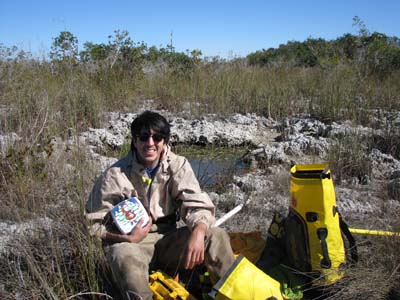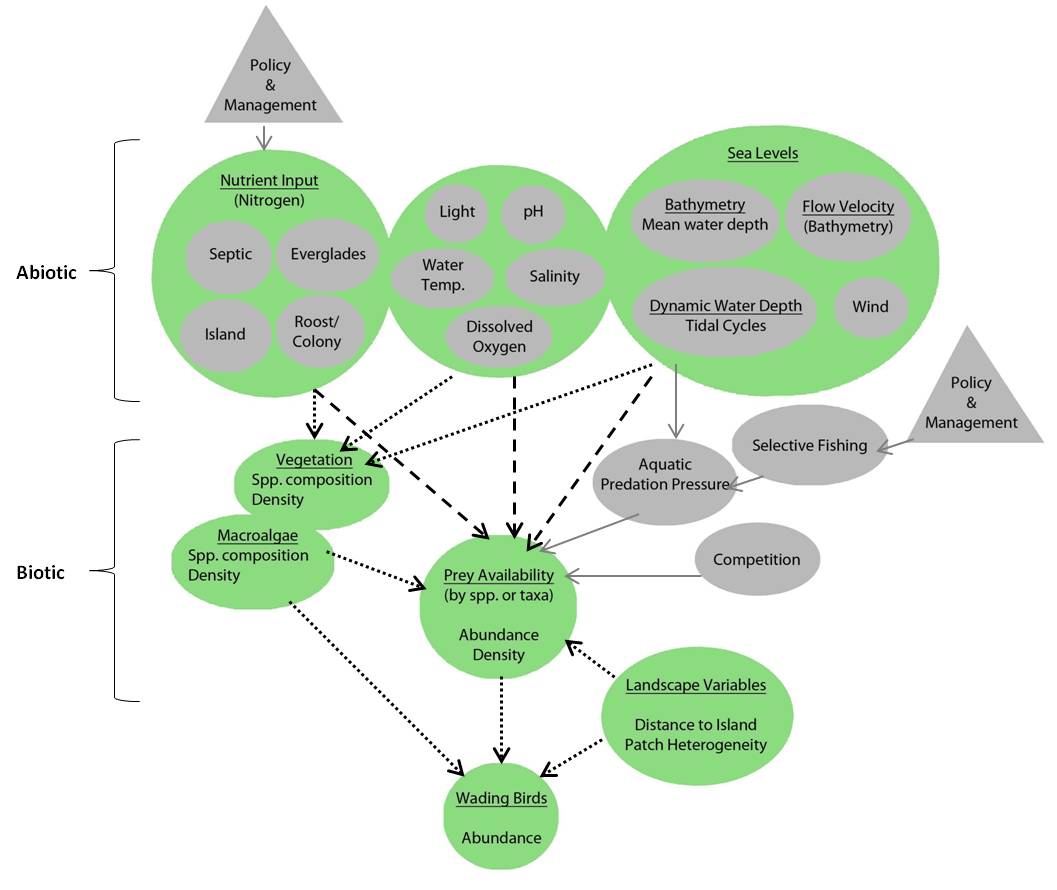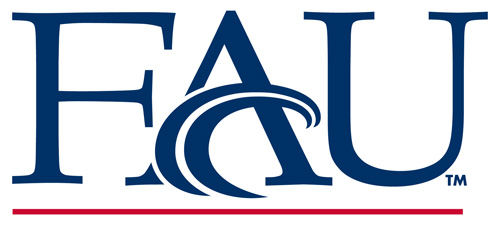Research Summary

A recent model of Little Blue Heron foraging habitat in Great White Heron National Wildlife Refuge (GWHNWR; Calle et al. 2012) highlighted the foraging habitat losses that are likely to occur due to sea level rise, but the study also identified key knowledge gaps that reduced certainty of model predictions. Little Blue Herons were not distributed uniformly within their water depth window (i.e., the depths at which they can forage), suggesting that birds were responding to habitat features that were not included in the model. If particular tidal flats are more important as foraging habitat than their water depths would predict, then the study would have are underestimated the negative effects of their degradation, and it would have missed high priority sites for management purposes.

One factor shown to strongly affect wading bird habitat selection (Gawlik 2002, Lantz et al. 2010, Beerens et al. 2011), physiology (Herring et al. 2011), and reproduction (Herring et al. 2010) in a nearby ecosystem, and that was not in the previous foraging habitat model is prey availability. Prey availability is a composite variable representing the abundance of prey as well as the vulnerability of prey to capture. These factors interact in an indirect way, which can be dynamic. For example, nutrient inputs in oligotrophic ecosystems can increase fish abundance (Turner et al. 1999) but it may also produce dense vegetation that actually reduces prey vulnerability or changes the spatial scale at which prey become available (Crozier and Gawlik 2002). Similarly, anthropogenic inputs of nutrients in shallow seagrass meadows can lead to high macroalgal abundance and a change in vegetation structure (Lapointe et al. 1994). Hydrologic fluctuations, which will be greatly affected by sea level rise, have perhaps the strongest influence on the vulnerability of prey to capture by wading birds, which are restricted to feeding in shallow water (Gawlik 2002). Water level fluctuations from tidal cycles also affect the abundance of prey by affecting fish movement patterns (Roundtree and Able 2007).
Wading birds are likely able to mitigate, to varying degrees, the effects of habitat loss due to sea level rise by selecting habitats that offer richer foraging opportunities and by modifying their behavior to allow for longer foraging periods. However, this assumption is based on the resiliency in the relationships between various drivers of prey availability during future sea level rise, or continuous input of high levels of nutrients. The resilience of these relationships is poorly known for the Florida Keys, an ecosystem with unique combinations of ecosystem drivers, landscape attributes, and biotic communities.

For my Master's research I plan to continue to work with Dr. Gawlik and Dr. Zhixiao Xie, and collaborate with Dr. Brian Lapointe and Dr. Lauri Green (Harbor Branch Oceanographic Institute) to identify significant drivers of prey availability and to determine the the most influential variables that contribute to a wading bird's selection of foraging habitat. The research will contribute basic natural history (e.g. dietary preferences in coastal systems), as well as improve upon our ability to predict foraging habitat of coastal foraging wading birds. The study will be set in the Great White Heron National Wildlife Refuge in the Florida Keys.
Figure 1. A conceptual model of key abiotic and biotic environmental variables that are thought to influence prey availability, as well as the selection of foraging habitat, for wading birds in coastal ecosystems. We intend to survey for variables that are within green bubbles. Dashed lines represent relationships between variables which we intend to study.

